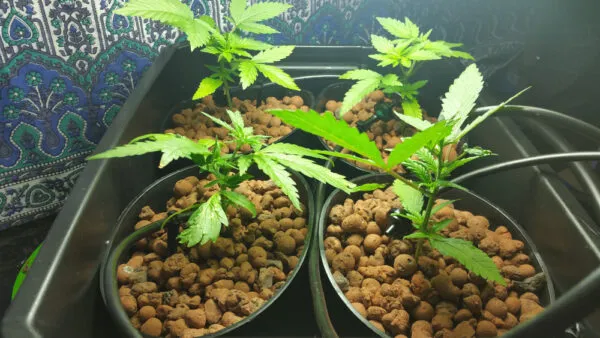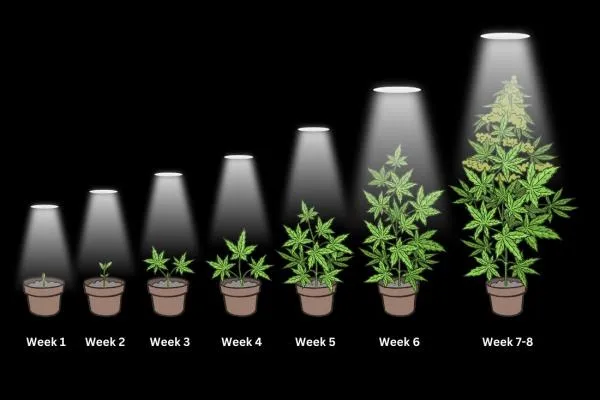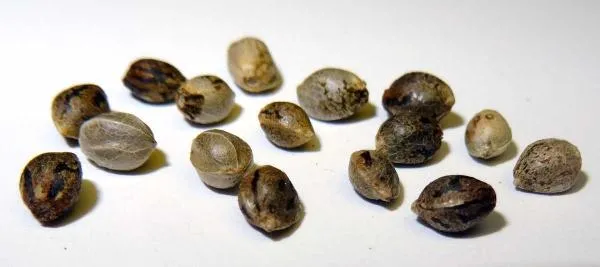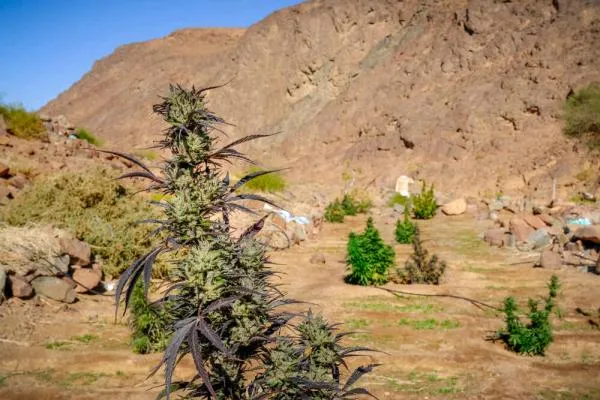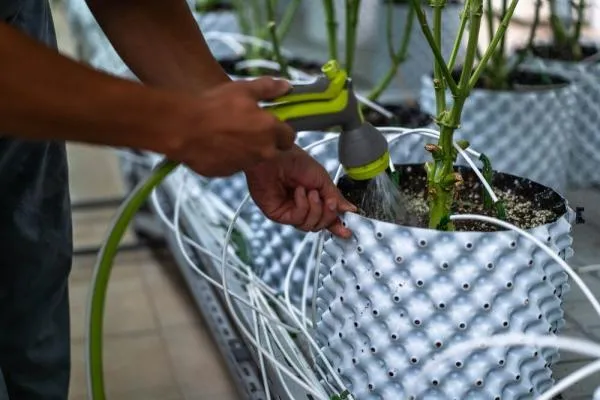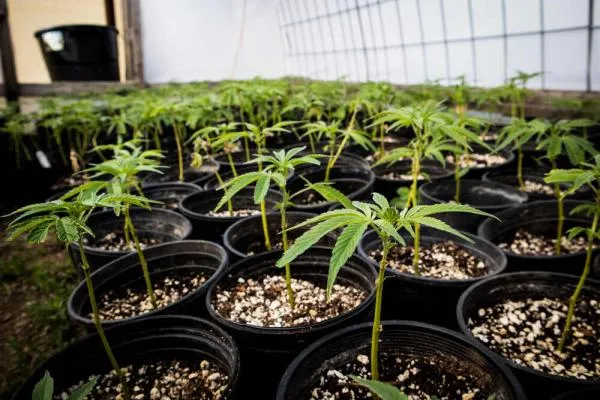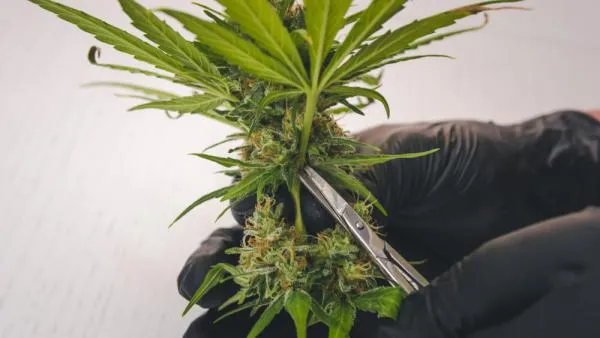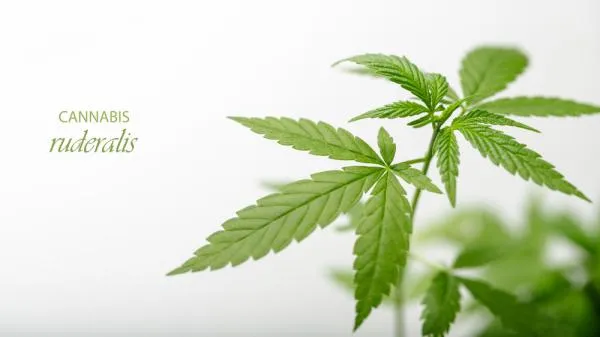So, you want to grow some cannabis and have decided to give your hand a go at hydroponics. From the simple wick method to the more complex aeroponics systems there are lots of variations of hydro setups and so much to learn. In this article we will break down each of the methods and give you the pros and cons of growing weed hydroponically. So, hopefully by the time you are finished reading you will have a good idea of what the best type of hydroponic system is for your home grow.
What is hydroponics and how does it work?
Cannabis plants are normally grown using soil. Hydroponics is a method that involves growing plants without the use of soil. Instead, it is substituted for an inert, soilless medium such as rockwool, clay pebbles, or coco coir. Once established, the roots are fed with a nutrient rich water, that is usually pumped around from in a continuous cycle from a reservoir that is situated underneath the pots. When growing with soil the roots of a plant are forced to expand through the medium in search of nutrients. With hydroponics there is an abundant supply of nutrients readily available to the plant which results in faster growing and bigger yields.
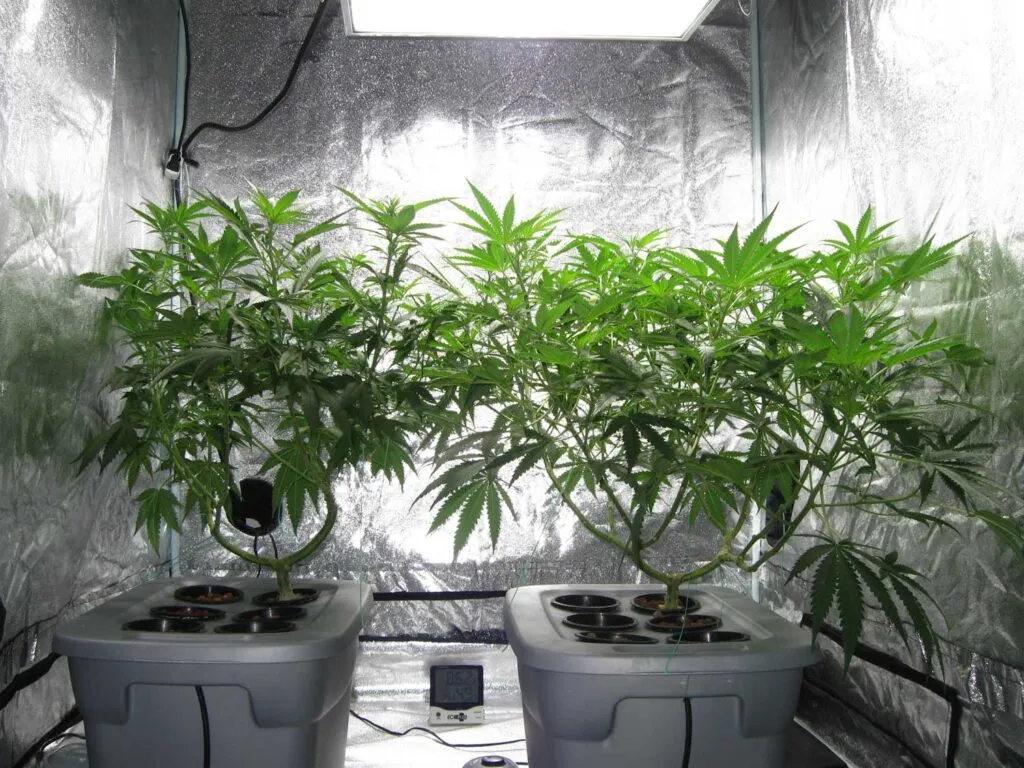
When was hydroponics invented?
Hydroponic gardens can be dated back to the Hanging Gardens of Babylon as well as the Floating Gardens of China. This method has evidently been around for quite some time, however the credit for modern hydroponics goes to a man named William Frederick Gericke.
In 1929, while working for the University of California at Berkeley, he publicly promoted the notion of using solution culture for producing agricultural crops. The general public, along with Gericke’s colleagues doubted the idea, so to prove them wrong he grew 25-foot tomato vines using nothing but water and nutrients. He initially wanted to call the method aquaculture but later realized the term already existed and referred to the culture of aquatic organisms, so he went with the Greek terms of ‘hydro’ (water) and ‘ponos’ (labor) to get hydroponics. The method didn’t take off until after World War II when it expanded to countries in Europe, the Middle East and the Soviet Union
The prohibition of cannabis in the United States also made the conditions ripe for applying it to growing marijuana domestically vs. having it imported from countries like Mexico. Growing moved indoors out of sight of pesky law enforcement and could be done at a much faster rate with massive yields while using relatively little water and nutrients.
What are the main types of hydroponic systems?
There are 8 different types of hydroponic systems, to a new grower this might seem confusing and intimidating, but despite all the necessary components, it is possible to run systems such as wick and DWC with relative ease. Let’s look at some of the most popular methods employed by growers today so you can decide which hydro setup is best for your grow.
Aeroponics
The name certainly sounds fancy and high-tech and there might be some additional equipment to procure but this system simply involves getting oxygen to the roots by spraying a mist of aerated, fast-moving nutrient solution on them. Plants (including clones) can be held in little baskets containing rockwool or clay pellets. The roots grow out of this basket and then are showered with a very fine mist.
Benefits of Aeroponics:
- Faster Growth: Aeroponics supplies more oxygen and nutrients directly to the roots of the plant, leading to big yields and fast growth.
- Water Efficiency: Aeroponics uses significantly less water compared to traditional soil-based growing methods and some other hydroponic systems.
- Nutrient Efficiency: Aeroponics delivers nutrients directly to the plant roots, resulting in more efficient nutrient absorption and reduced waste compared to some other hydroponic systems.
- Keeps roots fresh: Aeroponic systems provide plenty of oxygen to the roots of a plant keeping them fresh and free of root rot.
Drawbacks of Aeroponics:
- High Initial Cost: Aeroponic systems can be more expensive to set up than some other hydroponic systems.
- Technical Expertise: Aeroponics requires a higher level of technical expertise and knowledge than some other hydroponic systems.
- Power Outages: Aeroponic systems require constant power to maintain the nutrient mist, which can be problematic in the event of a power outage, and this disadvantage is shared with other hydroponic systems.
- Lack of Margin for Error: Aeroponic systems are sensitive to changes in environmental conditions, and small mistakes can have a significant impact on plant growth and yields, and this disadvantage is also shared with other hydroponic systems.
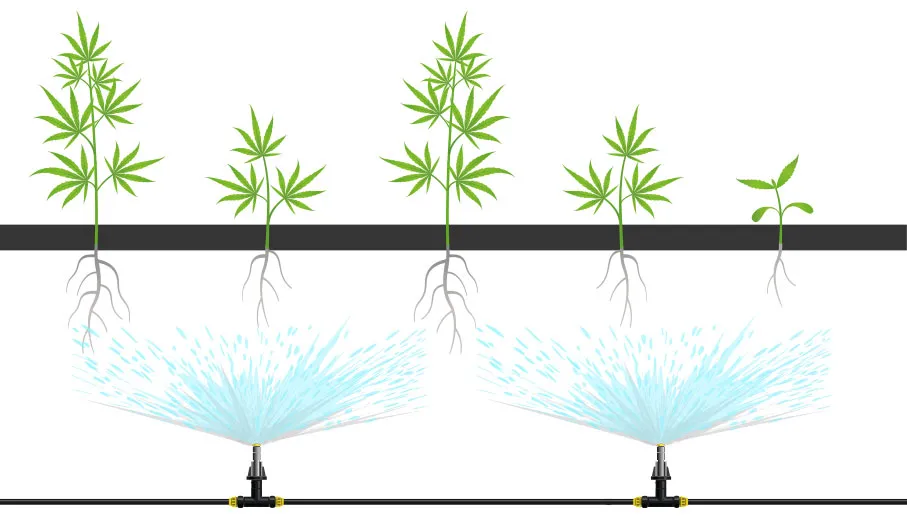
Deep Water Culture (DWC)
DWC involves a combination of oxygenated water and nutrient solution over which plants are suspended. The roots grow out into deep buckets, which contain oxygen stones at the bottom. With complete access to water, nutrients and oxygen, plants grow extremely fast, and yields are enormous. The DWC system also allows for many variations to the setup, making it quite the versatile technique which is great for beginners.
Benefits of DWC:
- Faster Growth: DWC hydroponics can provide plants with more oxygen and nutrients, leading to faster growth and larger yields compared to some other hydroponic systems.
- Water Efficiency: DWC hydroponics uses less water compared to traditional soil-based growing methods and some other hydroponic systems.
- Nutrient Efficiency: Nutrient solution in DWC hydroponics is directly delivered to the plant roots, resulting in more efficient nutrient absorption and reduced waste compared to some other hydroponic systems.
- Reduced Pests and Diseases: DWC hydroponic systems are less likely to attract pests and diseases due to the absence of soil, and this advantage is shared with some other hydroponic systems.
Drawbacks of DWC:
- High Initial Cost: Setting up a DWC hydroponic system can be expensive compared to some other hydroponic systems.
- Power Outages: DWC hydroponic systems require constant power to maintain the nutrient solution, which can be problematic in the event of a power outage, and this disadvantage is shared with other hydroponic systems.
- Lack of Margin for Error: DWC hydroponic systems are sensitive to changes in environmental conditions, and small mistakes can have a significant impact on plant growth and yields, and this disadvantage is also shared with other hydroponic systems.
- Risk of root rot: Since the grow media in DWC system is periodically saturated with water, there is a risk of root rot if the system is not properly maintained.
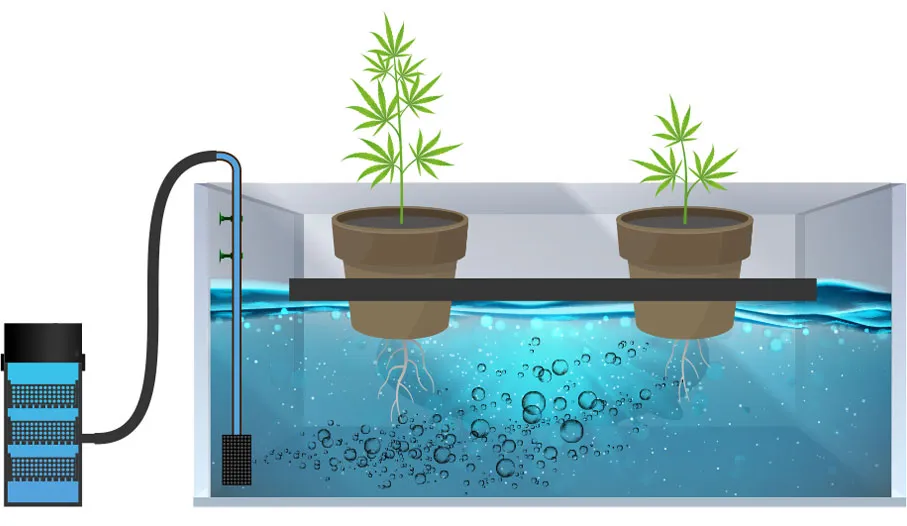
Bubbleponics
Perhaps the most fun-sounding name of hydroponic techniques, bubbleponics is nothing more than a Deep Water Culture system that is top-fed. Here plant roots receive a stream of aerated nutrient solution from above, which makes roots grow even faster in the vegetative period.
Benefits of Bubbleponics:
- Fast Growth: The Bubbleponics system provides plants with plenty of nutrients and oxygen, leading to faster growth rates and larger yields compared to some other hydroponic systems.
- Easy to Maintain: The Bubbleponics system is relatively easy to maintain, and the recirculating system reduces the need for frequent water changes.
Drawbacks to Bubbleponics:
- Pump Failure: The Bubbleponics system requires a reliable pump to maintain the flow of nutrient solution, which can be problematic in the event of a pump failure.
- pH Balance: The Bubbleponics system requires careful monitoring and adjustment of the pH balance to ensure optimal nutrient uptake by plants.
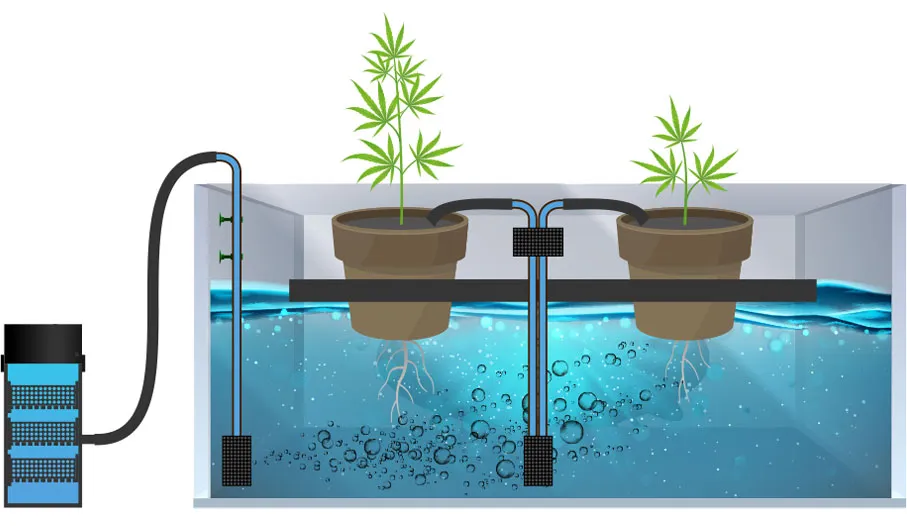
Drip System
Drip irrigation provides water to the planting medium by way of a drip emitter connected to tubing. The emitter is placed in a container or close to the root ball of every plant in the system. A flexible tube carries water from the nutrient reservoir and runs the length of the entire garden. This main line has little spaghetti tubing connecting it with the rockwool cube or plant container with an emitter that sits on a spike. The water can be recycled, though occasionally it gets discarded.
Benefits of Drip irrigation:
- Nutrient Efficiency: Drip irrigation hydroponic systems allow for precise control over nutrient delivery, ensuring that plants receive the right amount of nutrients they need to grow strong and healthy.
- Flexibility: Drip irrigation hydroponic systems can be used in a wide variety of growing environments, from small grow tents to large commercial facilities.
Drawbacks of Drip irrigation:
- Clogging: Drip irrigation systems can become clogged with mineral deposits, algae, and other contaminants, which can reduce the effectiveness of the system.
- Maintenance: Drip irrigation hydroponic systems require regular maintenance, including cleaning and replacing components, to ensure optimal performance.
- Precise Management: Drip irrigation hydroponic systems require precise management of nutrient delivery and irrigation, which can be challenging for inexperienced growers.
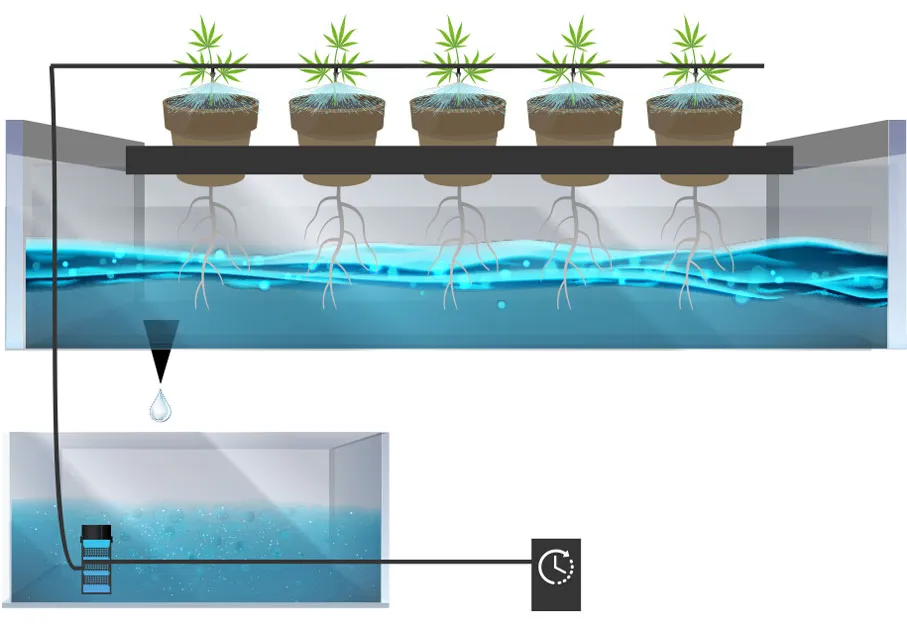
Ebb & Flow
This is the method that most people probably think of when they hear the term hydroponics. Also referred to as Flood & Drain, rockwool cubes are utilized here as the soilless medium (though any inert soilless medium will do) which is then kept in a tray. From a separate container, nutrient-rich water periodically gets pumped into the tray, resembling a natural rain cycle. Once the plant roots have been bathed in the nutrient solution, it is then drained or pumped back into the original container to be used again later.
Benefits of Ebb and flow:
- Versatile: Ebb and Flow systems can be used with a variety of grow mediums, including perlite, coconut coir, and hydroton. This makes them adaptable to different types of cannabis plants and growing conditions.
- Low maintenance: Ebb and Flow systems are relatively simple to set up and require minimal maintenance once installed.
- Good yields: Ebb and Flow systems can be used to grow big yielding plants when set up correctly.
- Fresh Roots: Because the system empties and refills on a timer the roots are given constant fresh oxygen whilst having a readily available supply of nutrients.
Drawbacks of Ebb and flow:
- Risk of power outages: Ebb and Flow systems require a pump to periodically flood the container, which means they need a reliable source of electricity. If there is a power outage when the system is drained, it could kill your entire crop.
- Limited control over nutrient delivery: Since the nutrient solution is periodically flooded into the grow media, it can be difficult to control exactly how much and when the plants receive nutrients.
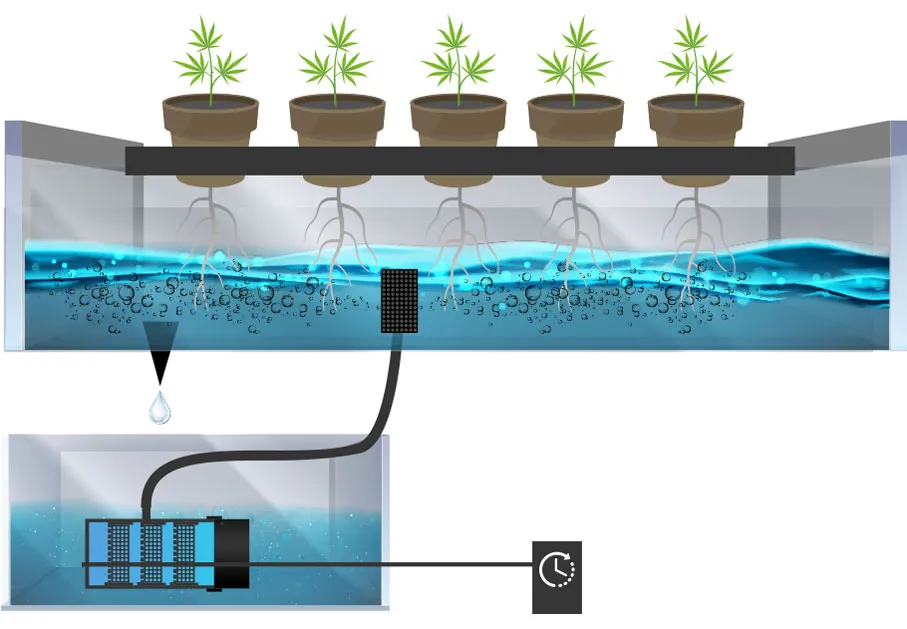
Nutrient Film Technique (NFT)
In this setup, a shallow film of water is continuously moved by gravity over roots that grow in a tray or PVC tubing that is aerated using water circulation, bubblers or sprays. The solution usually gets recirculated back into the reservoir. This method is better suited for small plants as the roots of large plants can end up blocking the water channel.
Benefits of NFT:
- Water Efficiency: The NFT system is highly water-efficient, as the nutrient solution is constantly recirculated and not allowed to pool.
- Fast Growth: The NFT system can provide plants with ample nutrients and oxygen, leading to faster growth rates and larger yields compared to some other hydroponic systems.
- Minimal Growing Medium: The NFT system requires very little growing medium, reducing costs and simplifying the setup process.
Drawbacks to NFT:
Technical Expertise: The NFT system requires a higher level of technical expertise and knowledge than some other hydroponic systems.
- Lack of Margin for Error: The NFT system is sensitive to changes in environmental conditions, and small mistakes can have a significant impact on plant growth and yields.
- Pump Failure: The NFT system requires a reliable pump to maintain the flow of nutrient solution, which can be problematic in the event of a pump failure.
- pH Balance: The NFT system requires careful monitoring and adjustment of the pH balance to ensure optimal nutrient uptake by plants.
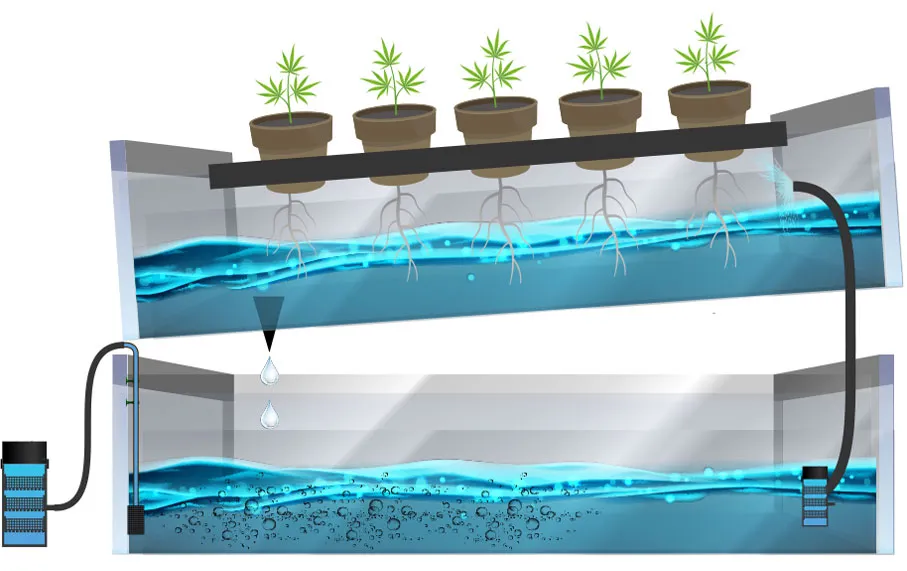
Wick system
Probably the easiest hydroponic system in design, setup and maintenance. Doing most of the work here is a wick that uses capillary action to draw water towards the roots. The plant is kept above a reservoir, a rope connects the two at each end, pulling water from the reservoir into the plant container. Much like water being pulled up by a paper towel, no additional work needs to be done by the grower to keep the medium moist, making it an easy passive hydroponic system.
Benefits of Wick:
- Low Cost: The Wick system is the cheapest to set up and has the lowest running cost.
- Simple Setup: It is easy to set up and requires very little technical knowledge.
Drawbacks of Wick:
- Slower Growth: The Wick system is only suitable for growing small and less demanding strains because nutrient uptake is usually much slower. If you are on a budget then it can be used to grow autoflowers successfully.
- Limited Control: The Wick system does not offer much control over the nutrient solution's delivery, temperature, and pH levels, which can lead to nutrient imbalances and plant stress.
- Limited Growth Medium: The Wick system uses only a small amount of growing medium, which can be limiting for the plant's root development.
- Risk of root rot: Without a pump to circulate the water there is more chance of stagnation and mold developing.
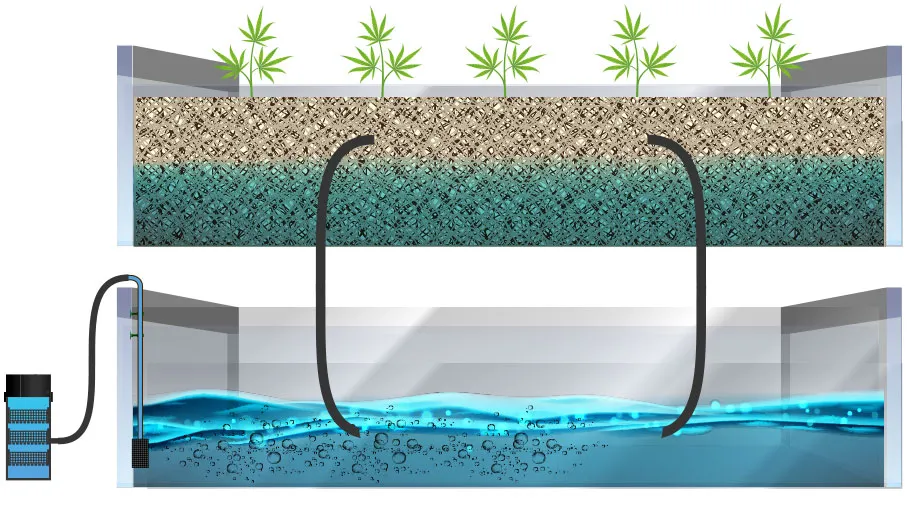
What is the most efficient hydroponic system?
So, you have decided to try your hand at growing weed hydroponically, but what is the most efficient hydro system to use? Well, it depends on what you mean by efficient, if you mean the least expensive and time consuming to setup then the wick or DWC systems will be the most efficient. However, if you mean which is the best overall with regards to yield, set up cost and maintenance, then the drip irrigation system is possibly the best all rounder, although some growers may have their own opinion and disagree with this.
In conclusion, growing weed using hydroponics may be a little more complicated than soil but provide an efficient and sustainable way to grow plants. The various types of hydroponic systems, such as Deep Water Culture, Nutrient Film Technique, and Aeroponics, all have their own advantages and disadvantages depending on the grower's needs, budget and experience level.
